The Legacy of Pallavas, Mahabalipuram-Part II: Caves and Sculptures
The second and the largest complex at the Mahabalipuram hosts many cave temples and bas-reliefs. The monuments in this complex are scattered across on the hillock and one have to walk for more than a kilometer to cover all the monuments. On a shorter visit, do visit the Mahishasuramardini and Varaha cave temples, Descent of the Ganges and the Krishna Mantapa.
 |
| "Descent of the Ganges" - largest open-air bas-relief in the world |
We started with
Olakkannesvara Temple which is built on top of the Mahishasura mardhini cave, it also served as a light house overlooking the Coromandel Coast of the Bay of Bengal. During the 7
th century Mahabalipuram served as a major port for the Pallavas.
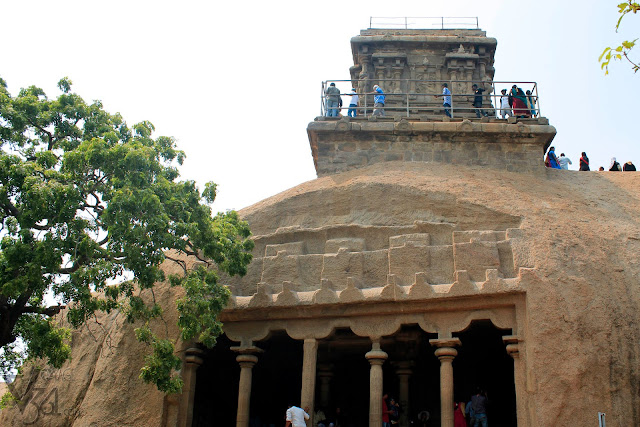 |
| Olakkannesvara Temple on top of the Mahishasura mardhini cave |
Mahishasuramardini Mandapa is a rock-cut cave temple with large exquisitely carved reliefs on its interiors, the prominent ones are the goddess Durga slaying the buffalo headed Mahishasura and on the other side is the panel of Adisesha - Vishnu reclining on the seven hooded serpent.
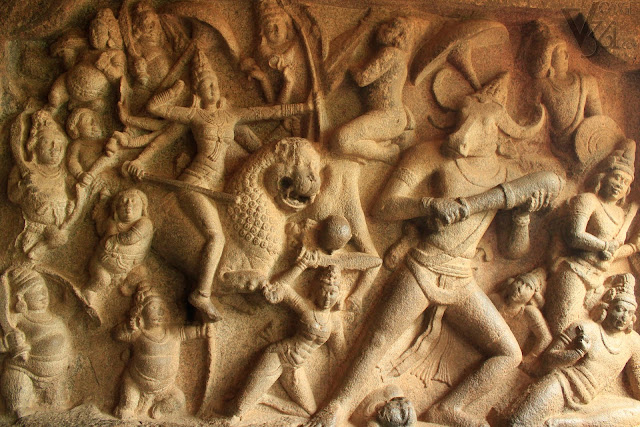 |
| Large panel of goddess Durga slaying the buffalo headed Mahishasura |
 |
| Another large carved panel inside the Mahishasura mardhini cave depicting Adisesha - Vishnu reclining on the seven hooded serpent. |
Further on the way are the
Ramanuja Mantapa and
Raya gopura, leading our way to the Varaha Cave Temple
.
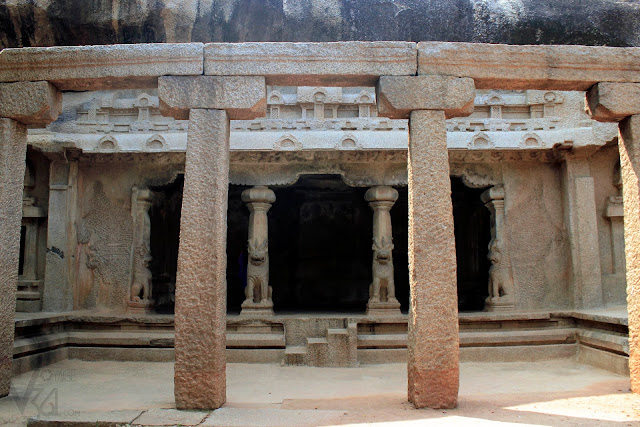 |
| Ramanuja Mantapa, originally a shiva cave temple |
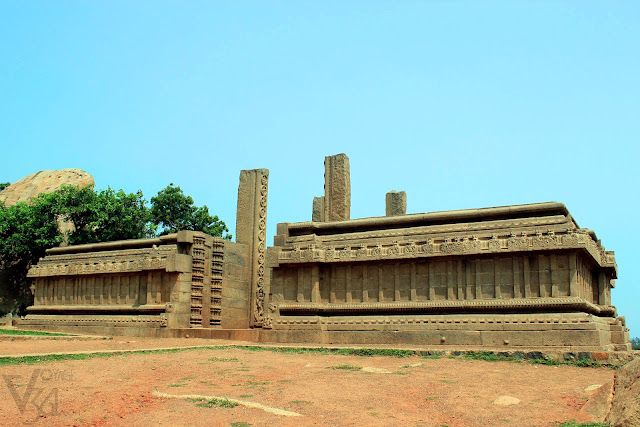 |
| Raya Gopuram on the way towards Varaha Cave |
The most prominent sculpture in the
Varaha cave temple is that of Lord Vishnu in the incarnated form of a Varaha or boar lifting Bhudevi, the mother earth goddess from the sea.
On the other side of the wall is a sculpture panel of Vishnu as Trivikrama. On the eastern wall are the panels of Goddess Lakshmi and another of Goddess Durga standing on a lotus.
 |
| Varaha Cave temple with the panel of Lord Vishnu in the incarnated form of a Varaha or boar lifting Bhudevi |
 |
| Sculpture panel of Vishnu as Trivikrama |
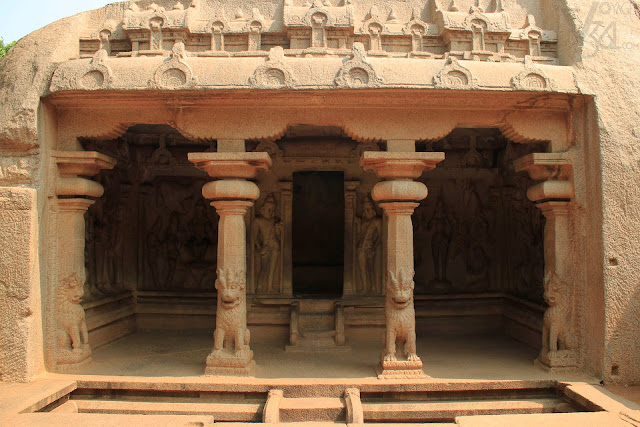 |
| Varaha cave temple with panels of Goddess Lakshmi (left) and another of Goddess Durga standing on a lotus (right) |
There is also an interesting natural rock boulder over the hillock called as the
Krishna's butter ball. This is a massive rock about 5 meter in diameter in the shape of a ball, balanced on the slope of the hill which is inclined at an angle of 45 degrees. Legend has it that it has sustained elephants pull and tsunamis but still standing still.
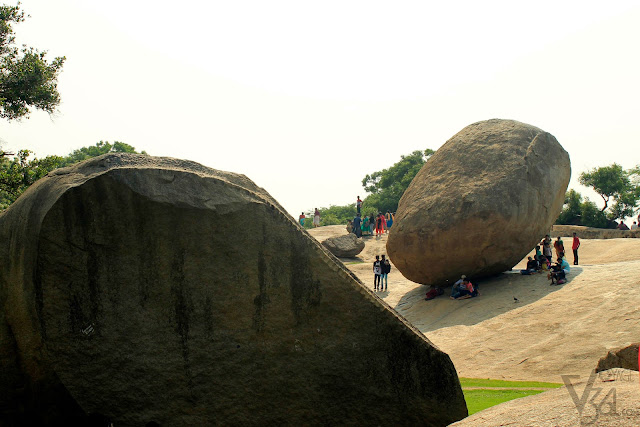 |
| Krishna's butter ball - The Balancing rock of Mahabalipuram |
The last one in the path was the
Trimurti Cave Temple, which is less visited by tourists due to its isolation from other monuments. The cave temple has three shrines dedicated for Brahma, Vishnu and Maheshwara (Shiva).
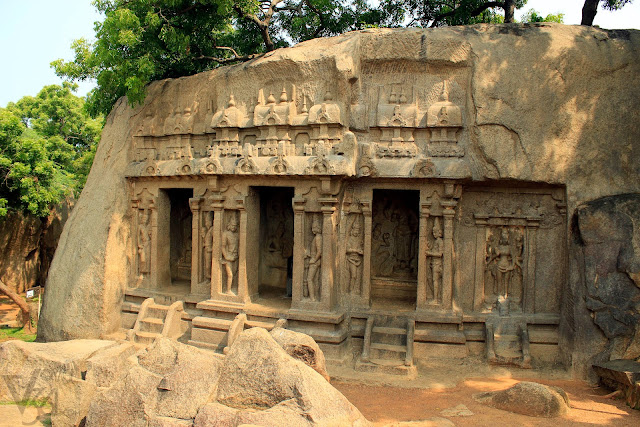 |
| Trimurti cave temple |
Further down the hillock on the West Raja street is the largest open-air bas-reliefs in the world,
Descent of the Ganges and
Arjuna's Penance. It represents the legend of the descent of the sacred river Ganges to earth emerging from Shiva's head and flowing in between the two huge boulders and about 146 characters are carved out to represent animals, half-humans, people and gods. Most notable piece of art is the life size panel of elephant herd including adult and baby elephants moving towards the river to drink water.
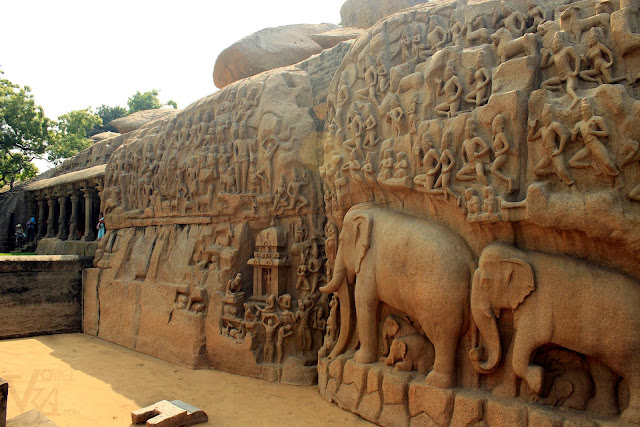 |
| Descent of the Ganges bas-relief and the adjoining Panchapandava cave |
 |
| Life size panel of elephant herd moving towards the river ganges |
The cave temple adjoining the open-air bas relief is the unfinished
Panchapandava Mandapa, which is also the largest cave temple length-wise in Mahabalipuram. The columns of the verandah have lion bases which is typical to Pallava style of architecture. There are six pillars and two pilasters on the front facade of the cave temple.
Krishna Mantapa is another masterpiece beside the Panchapandava Mandapa, originally an open air bas-relief dedicated to lord Krishna but later enclosed within a mantapa during the Vijayanagara rule in 16
th century. The bas-relief in the mantapa has sculptured panels of Krishna lifting the Govardhana hill to protect the gopis (milkmaids) and cowherds from floods.
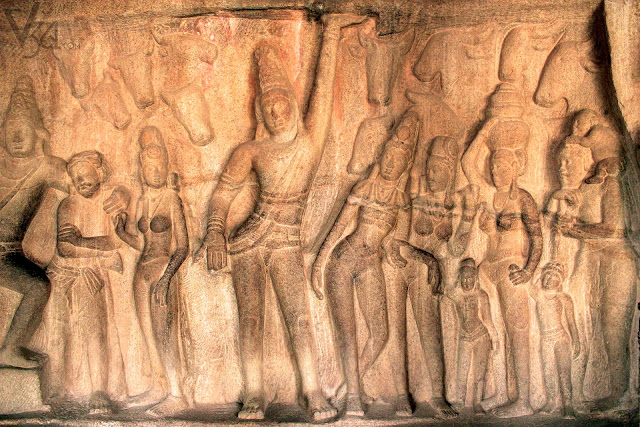 |
| Bas-relief of Govardhandhari |
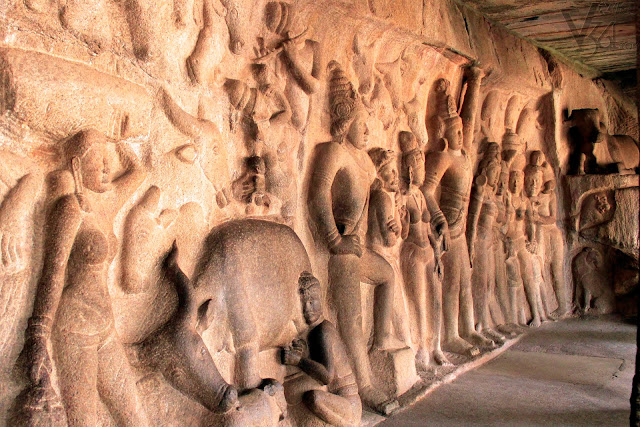 |
| Panel of Krishna lifting the Govardhana hill to protect the gopis (milkmaids) and cowherds from floods |
Entry ticket and Parking fee: Entry is free. Car parking is on the road and is free.
Timings: Sunrise to Sunset, typically 6:00 am to 6:00 pm.
Entry ticket and Parking fee: Entry is free. Car parking is ₹30, ample parking is available.
















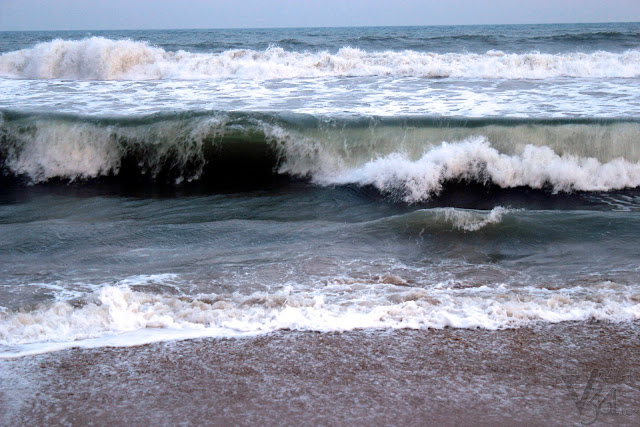
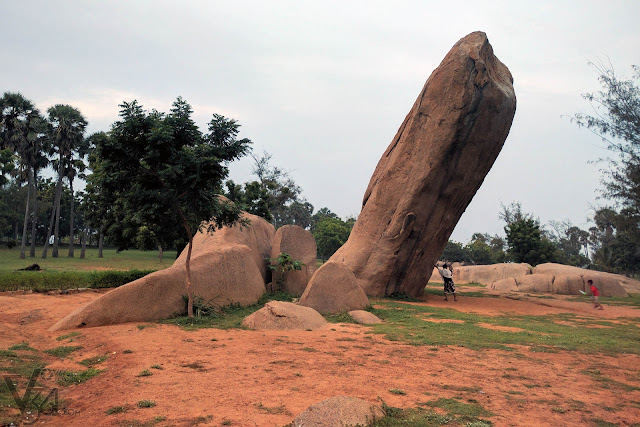
Comments
Post a Comment